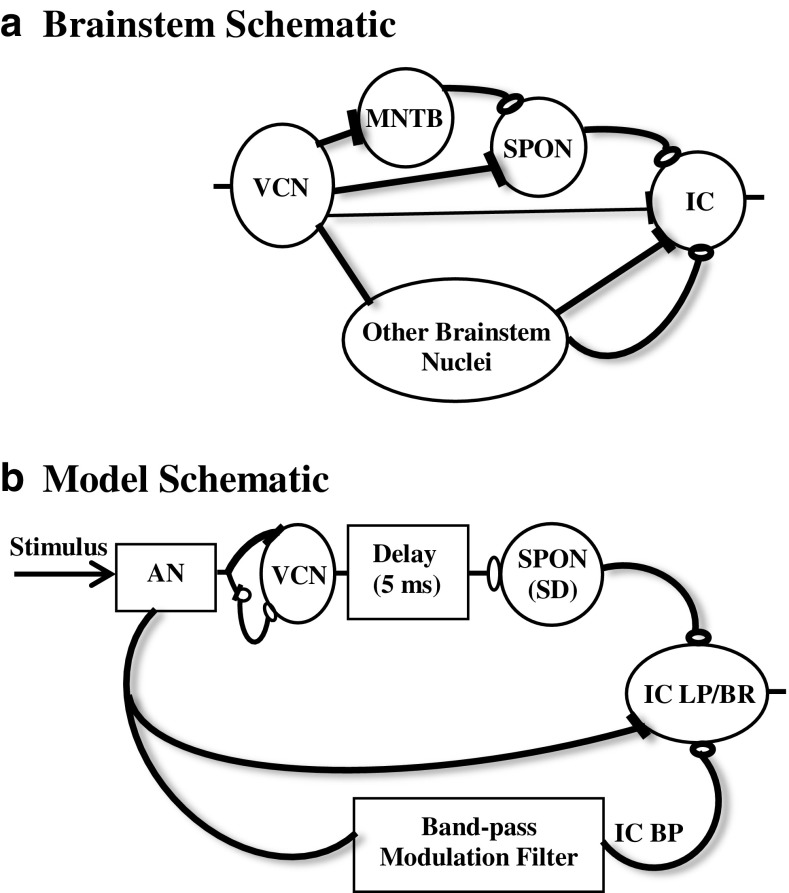FIG. 1.
a Simplified schematic of the brainstem pathways that are most closely related to the proposed model. Filled “terminals” indicate excitation, and open ones indicate inhibition. For simplicity, crossing of the midline is omitted in this diagram. b SPON model. The AN model provides inputs to the same-frequency inhibition and excitation (SFIE) model used to simulate the responses of VCN bushy neurons (Nelson and Carney 2004; Gai and Carney 2006). A neural delay of 5 ms was included to match the latencies of physiological responses of SPON neurons. The SPON response was modeled using an inhibitory postsynaptic potential (IPSP) originating from the delayed responses of the VCN model and a slope detector (SD) that measures the slope of the membrane potential. The SPON neuron responds with an action potential when the slope exceeds a preset threshold value. IC model. Responses of the AN and SPON models were inputs to a simplified model of IC neurons with band-pass (BP) and low-pass/band reject (LP/BR) modulation transfer functions. The AN and IC BP models provided excitatory and inhibitory inputs, respectively, to the IC low-pass/band reject (LP/BR) neurons. In this study, the output of the SPON model was applied as an additional inhibitory input to the IC LP/BR model to test the potential role of SPON responses in the forward-masking paradigm at the level of the IC.

